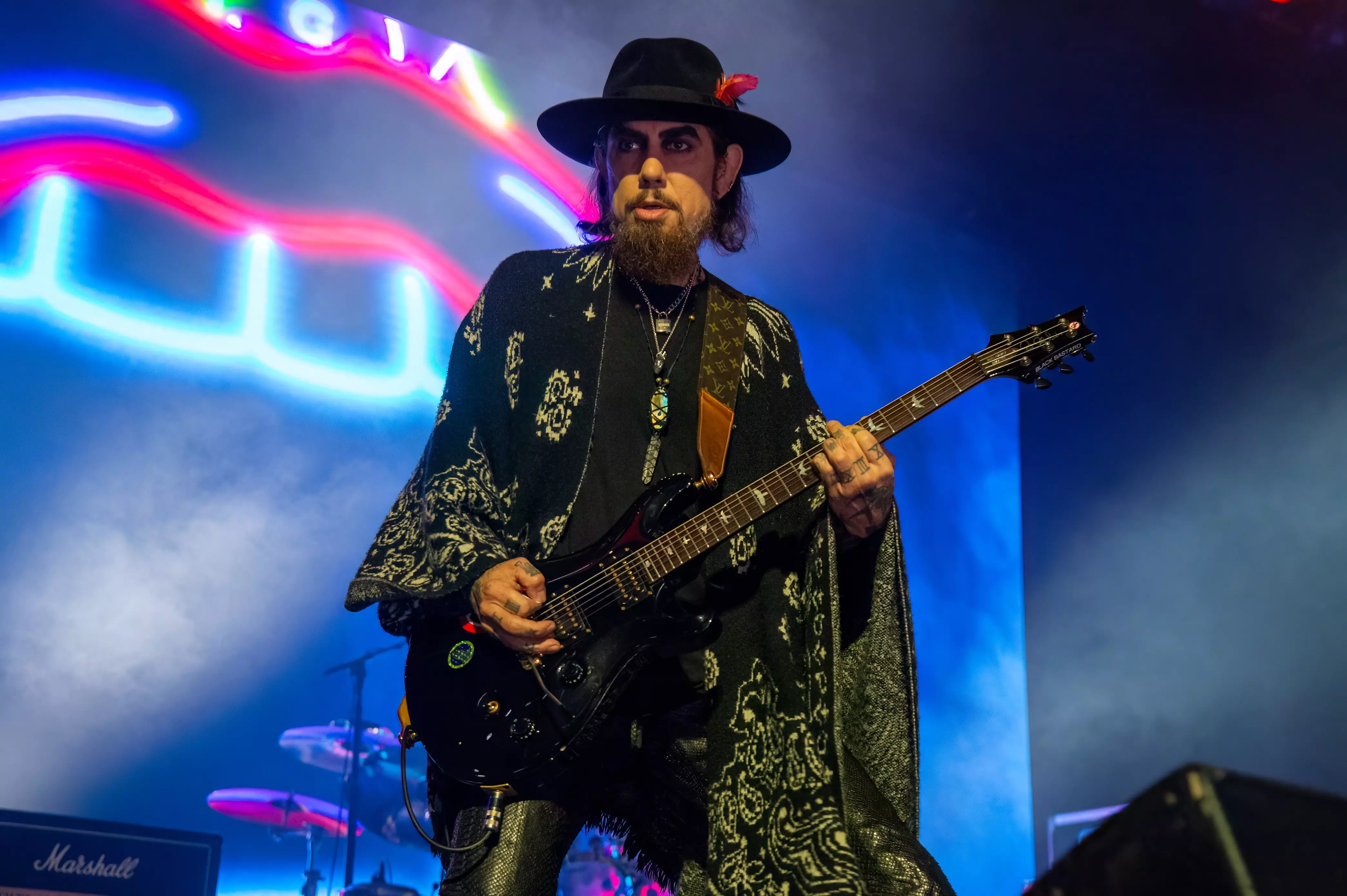Photo: Koh Hasebe/Shinko Music/Getty Images
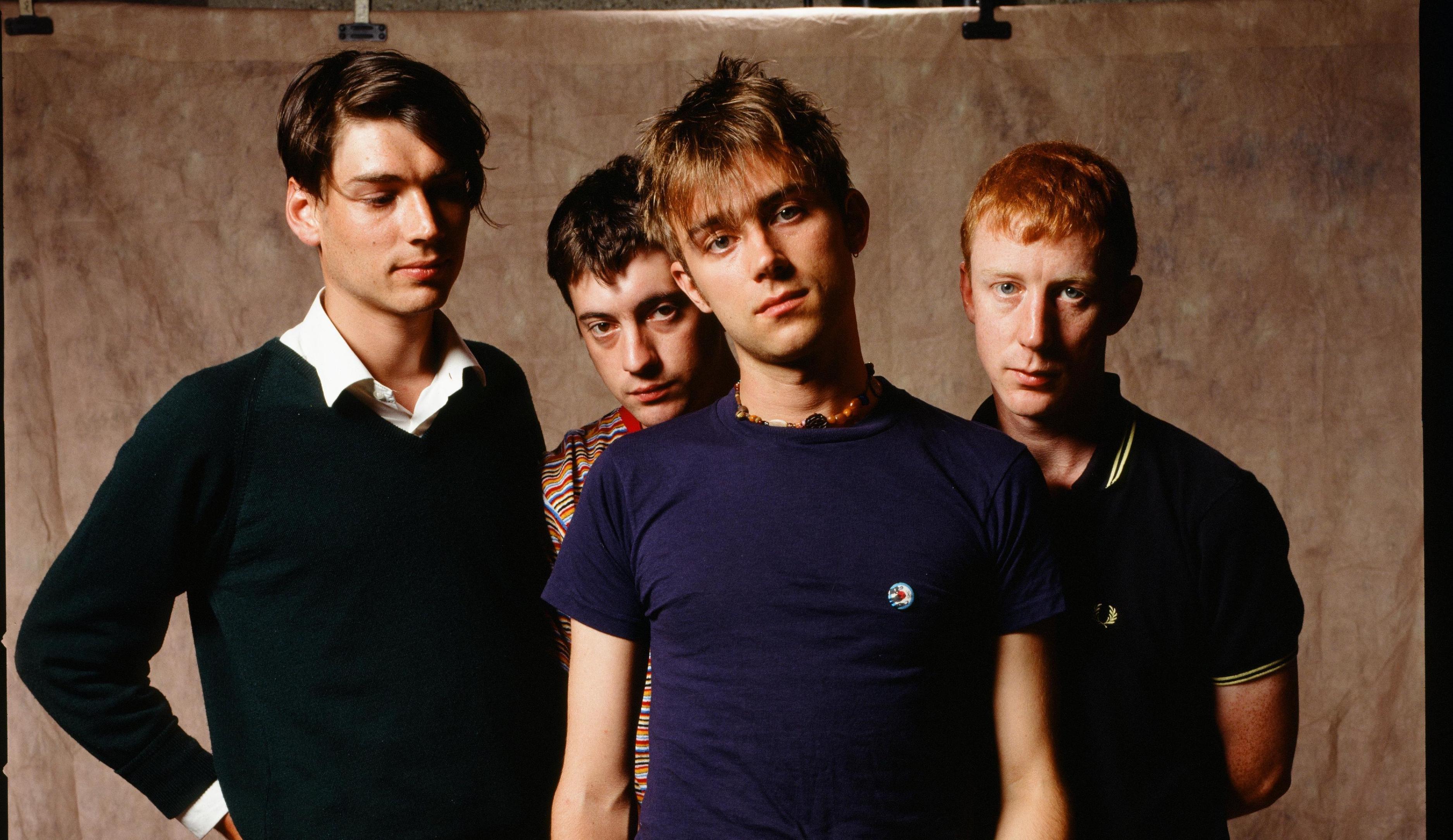
list
7 Ways Blur's 'Parklife' Served As The Genesis Of Britpop
On the heels of their Coachella return, Blur celebrates the 30th anniversary of their opus, 'Parklife,' on April 25. Take a look at how the album helped bring Britpop to the mainstream.
In April 1993, journalist Stuart Maconie coined the term Britpop for a Select magazine article celebrating the UK's fight back against the dominance of American rock. Remarkably, London four-piece Blur weren't even mentioned in the story. And yet, frontman Damon Albarn, guitarist Graham Coxon, bassist Alex James, and drummer Dave Rowntree would provide the catalyst for the scene's mainstream breakthrough.
Just a year later, Blur released what many consider to be Britpop's defining statement. Parklife served as a colorful, vibrant, and incredibly infectious love letter to all things Anglocentric, drawing upon the nation's great cultural heritage while also foreshadowing what was to come. And it instantly struck a chord with homegrown audiences desperate for guitar music that wasn't drowning in abject misery, and better reflected their day-to-day lives.
Remarkably, Albarn had predicted Parklife's success four years earlier. As he declared to music writer David Cavanagh in 1990, "When our third album comes out, our place as the quintessential English band of the '90s will be assured. That is a simple statement of fact."
Three decades after its game-changing release, here's a look at how Parklife forever changed both Blur's career trajectory and the history of British rock.
It Kickstarted Britpop's Greatest Rivalry
In one of those great rock coincidences, Blur's third LP hit the shelves just 24 hours after "Supersonic" gave a then-relative unknown Manchester outfit named Oasis their first ever UK Top 40 single. And the two bands would remain intertwined (perhaps begrudgingly so) from then on, culminating in the most high-profile chart battle in British music history.
You could argue that Oasis' Noel Gallagher threw the first stone, describing Parklife as "Southern England personified" in a manner that suggested it wasn't exactly complimentary. And according to his manager Alan McGee, Definitely Maybe cut "Digsy's Dinner" was written as a deliberate "piss-take of Blur."
An increasingly bitter war of words then broke out in the summer of 1995 as the "Country House" versus "Roll With It" war swept the nation. Blur emerged victorious, although Oasis had the last laugh when (What's The Story) Morning Glory spent 10 weeks atop the UK album chart.
It Brought Storytelling Back To Indie Pop
Heavily inspired by Martin Amis novel London Fields, Parklife was inhabited by a cast of intriguing fictional characters, essentially doubling up as a series of short stories. "Tracy Jacks," for example, is about a golf-obsessed civil servant who ends up getting arrested for public indecency before bulldozing his own house.
"Magic America" is the tale of Bill Barret, a Brit who commits to a life of excess during a Stateside holiday ("Took a cab to the shopping malls/ Bought and ate until he could do neither anymore"), while "Clover Over Dover" explores the mindset of a manipulative boyfriend threatening to jumping off the titular white cliffs.
Over the following 18 months, everything from Pulp's "Common People" and Space's "Neighbourhood" to Supergrass' "Caught by the Fuzz" and The Boo Radleys' "It's Lulu" were combining classic British guitar pop with witty Mike Leigh-esque vignettes of modern life.
It Originated The Big Indie Ballad
Dramatic ballads aren't necessarily the first thing that come to mind with Parklife, a record famed for its jaunty, "knees-up Mother Brown" ditties. But it boasts two examples: "To The End," an alternate Bond theme featuring a burst of Gallic flair from Stereolab's Laetitia Sadler, and the swoonsome "This Is A Low." Turns out the "mystical lager-eater" the record was designed to embody could also get a little vulnerable from time to time.
This appeared to give all of their laddish peers some pause for thought. Oasis, the most fervent advocates of the "cigarettes and alcohol" lifestyle, later scored their biggest hit with acoustic ballad "Wonderwall." And bands including Cast ("Walkaway"), Shed Seven ("Chasing Rainbows") and Menswear ("Being Brave") all enjoyed UK hits revealing their softer sides. No doubt Coldplay, Travis, and every other sensitive post-Britpop outfit that emerged in the late 1990s were taking notes, too.
It Paid Respect To The Greats
The Britpop scene was renowned for its slavish devotion to the first time British guitar bands ruled the airwaves, the Swinging Sixties. Oasis freely admitted they modeled themselves on the Beatles, while the likes of Ocean Colour Scene, Kula Shaker and The Paul Weller all released albums that sounded like they'd been discovered in a vintage record shop.
And while Blur would later distance themselves from the past with a sense of invention (which Albarn would also parlay into his various side projects, including the virtual band Gorillaz), they were more than happy to get all nostalgic on Parklife. See "Far Out," their only track to feature James on lead vocal, which resembled the trippy psychedelia of Pink Floyd in their Syd Barrett era, and the Sgt. Pepper-esque brassy instrumental "The Debt Collector," while there are also echoes of the Walker Brothers, The Kinks, and Small Faces. Suddenly, retro was the new cool.
It Turned Blur Into Britain's Biggest Guitar Band
The UK Top 10 success of 1991's "There's No Other Way" proved to be something of a false start for Blur, with the band soon falling by the wayside like every other baggy pop outfit that emerged at the turn of the decade. "Popscene," the 1992 single intended to revolutionize both their career and British guitar music in general, stalled at No. 32, while 1993 sophomore Modern Life is Rubbish sold just 40,000 copies.
But Parklife single-handedly turned Blur into Britain's biggest guitar band, reaching No. 1 in their homeland, spending 82 weeks in the Top 40, and eventually becoming a million-seller. It went on to pick up four BRITs, a Mercury Prize nomination, and has been recognized as an all-time great by Spin, Pitchfork, and Rolling Stone. Further proof of its glowing reputation came in 2009 when Royal Mail selected it as one of 10 albums worthy of commemorating on a postage stamp.
It Spawned A String Of Classic Singles
Parklife's campaign was kicked off in March 1994 with "Girls and Boys," a glorious dissection of British vacationers — which, surprisingly in the days when genre-hopping was frowned upon — evoked the '80s synth-pop of Duran Duran and Pet Shop Boys. Rowntree was even replaced by a drum machine, not that he particularly minded, luckily.
This indie floorfiller was followed up by the hugely underrated "To The End" and then the much-quoted title track. Everything about "Parklife" the song is larger than life: the Cockney geezer narration from Quadrophenia's Phil Daniels, the festival-friendly sing-along chorus, and the brightly colored video in which James — perhaps tipping his hat to Queen's "I Want to Break Free" -– donned soap opera drag. But fourth release "End of a Century," a melancholic tale of domestic drudgery complete with mournful trombone solo, once again proved there was a depth beyond their cheeky chappy personas.
It Made Brits Proud To Be British Again
Unable to connect with the oppressive angst and flannel shirts of the grunge movement that had plagued their first major North American tour in 1992, Blur first started to embrace their inherent Englishness on the following year's Modern Life is Rubbish. Unfortunately, this throwback to the original British Invasion was met with a resounding shrug of the shoulders on both sides of the Atlantic.
Undeterred, however, the band doubled down on all things Anglocentric on its follow-up, from its original title of London, to its greyhound racing cover art, to its celebrations of bank holidays, Club 18-30 holidays, and shipping forecasts. This time around, they managed to capture the zeitgeist (at home, at least), as the rise of New Labour and the forthcoming hosting of Euro '96 made everyone proud to be British again. Within 12 months, the UK charts were littered with homegrown guitar bands selling the idea of the English dream — and it all started with Parklife.
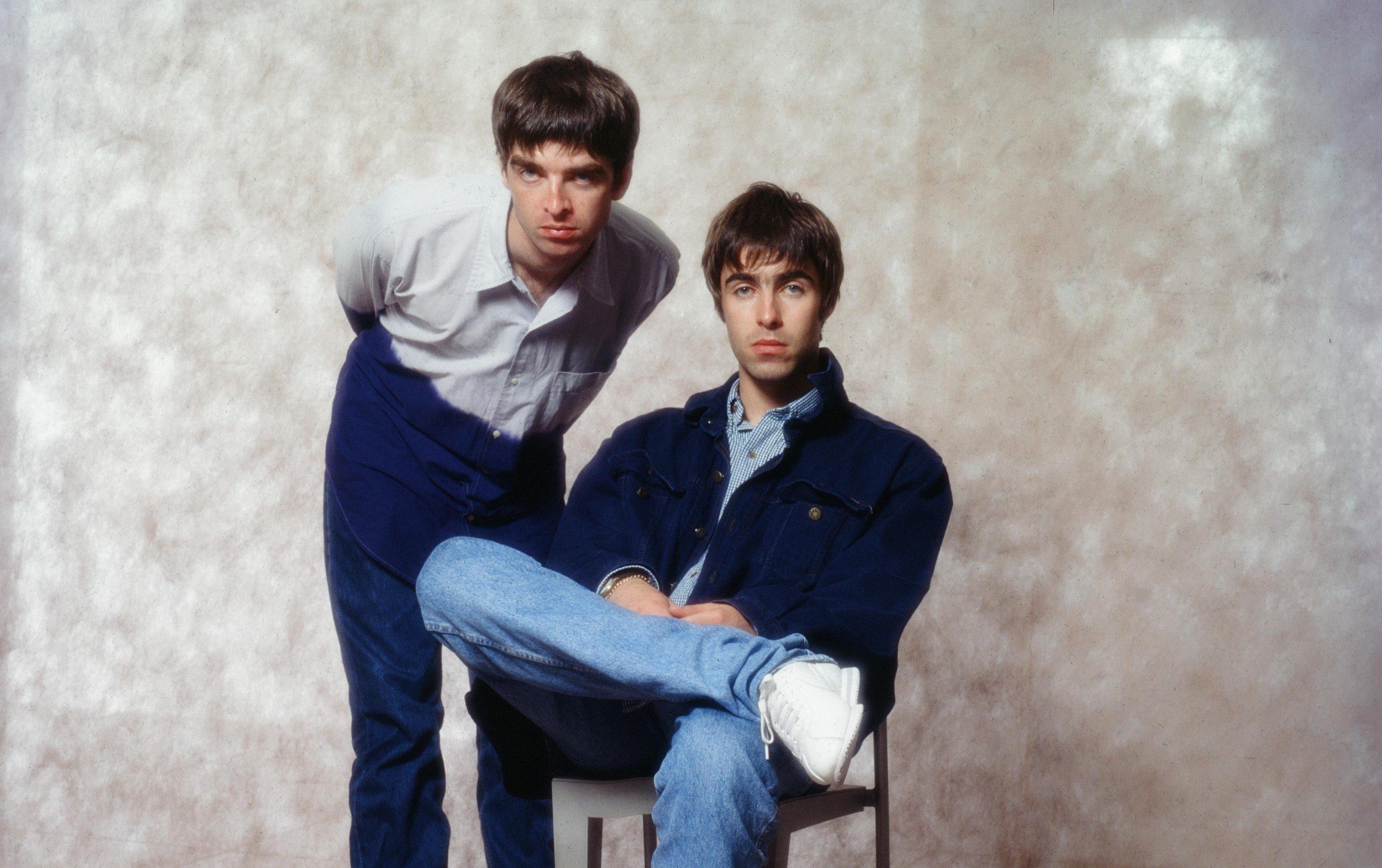
Photo: Koh Hasebe/Shinko Music/Getty Images
list
10 Ways Oasis' 'Definitely Maybe' Shaped The Sound Of '90s Rock
In honor of the 30th anniversary of Oasis' debut album, 'Definitely Maybe,' the band aren't just delivering a new deluxe edition — they're reuniting. As you celebrate the reunion and the reissue, revisit the groundbreaking original release.
In 1994, Oasis offered a reset for British indie rock. While the title of their debut album, Definitely Maybe, may have hinted at uncertainty, the siblings at the heart of the record were never anything less than 100 percent cocksure.
"We were ready to wipe everybody out," the band's most natural raconteur Noel Gallagher later revealed to Mojo. "However loud they were, we were louder. However fast they were, we were faster. However good they were, we would trump it."
It was this unbridled bravura that helped the Manchester-based brothers Noel and Liam (who were renowned just as much for their musical talents as their uncanny ability to pick a fight with each other), as well as bassist Paul "Guigsy" McGuigan, guitarist Paul "Bonehead"Arthurs, and drummer Tony McCarroll fulfil such lofty ambitions. Oasis quickly became the U.K.'s biggest guitar band of the ‘90s with a no-nonsense sound which incorporated the spirit of punk, the swagger of Madchester, and the songcraft of Beatlemania.
The rest of the world soon started to take notice, too. The album's "Live Forever" hit No. 2 on Billboard's Alternative Airplay chart, and Definitely Maybe reached platinum status in the States, paving the way for a GRAMMY-nominated mainstream breakthrough with 1995's follow-up (What's The Story) Morning Glory.
Read more: Looking Back In Appreciation: 25 Years Of Oasis' '(What's The Story) Morning Glory?'
Just before Oasis released a 30th anniversary edition of their debut album, they gave fans an even bigger surprise: a reunion tour announcement. The band will perform 14 shows across the UK and Ireland from July 4 through Aug. 17, 2025, including four hometown shows at Manchester's Heaton Park and four shows at London's famed Wembley Stadium.
As you dig into Definitely Maybe's latest re-release — filled with outtakes, B-sides and live performances — revisit the original release and learn why Definitely Maybe is considered such a game-changer.
It Brought Back Showmanship
As its name suggests, the shoegaze scene that defined British indie in the early 1990s desperately struggled with eye contact. Oasis, on the other hand, burst out of the blocks determined to connect with every single member of their audience. In the bold and bolshy form of Liam, they had the most magnetic frontman around.
The younger Gallagher brother wasn't a Mick Jagger-style showman; you'd never catch him bouncing from one end of the stage to the other. In fact, he'd often stay rooted in the same spot for the entire set. But his now-iconic pose — hands behind his back, sporting a duffle coat, sneering into the microphone seemingly placed a few inches too high — was such an ebullient display of swagger it left fans continually transfixed. Just look at their Glastonbury 1994 performance two weeks after releasing their second single for proof.
It Reflected The Working Class
While Britpop progenitors Blur and Suede emerged from the bohemia of London's art college scene, Oasis' roots were in the deprived Manchester suburb of Burnage. Noel spent his early adulthood as a roadie for neighboring indie favorites the Inspiral Carpets, while Liam had once joined his father laboring on building sites. As a result, they were able to reflect the lives of the masses far more effectively and authentically than most of their peers.
Hailed as “one of the greatest social statements of the past 25 years” by manager Alan McGee, "Cigarettes and Alcohol" advocates hedonism as a means of escaping the drudgery of the 9-5. And "Slide Away," written by Noel about ex-girlfriend Louise Jones, proved that Oasis could even talk about feelings in a manner relatable to those who wouldn’t normally touch love songs with a 10-foot pole.
It Wasn't Afraid Of The Obvious
Unlike Blur's Parklife, Pulp's Different Class, or the majority of albums that defined the Britpop era, Definitely Maybe wasn't dripping in post-modernism, irony, or knowing winks. "What you see is what you get" was essentially Oasis' default approach. And while their lyrics were often of the "moon in June" variety (see "What a life it would be/If you could come to mine for tea" on "Digsy's Dinner"), their refreshing simplicity only added to their universal appeal.
The Mancunians also weren't afraid to wear their influences firmly on their parka jackets' sleeves. The Beatles' fingerprints are all over the record as you'd expect from such devout acolytes. But Oasis also brazenly borrow from the New Seekers' Coca-Cola anthem "I'd Like to Teach the World to Sing" ("Shakermaker") and T-Rex's glam rock classic "Get It On" ("Cigarettes and Alcohol"). "Never be afraid of the obvious," Noel once reasoned. "Because it's all been done before."
It Turned Everything Up To 11
It took three attempts to nail Definitely Maybe's towering Wall of Sound. The band first entered Wales' Monnow Valley Studios with the Kinks producer Dave Batchelor. But he struggled to replicate the energy of their live shows and apart from "Slide Away," all of his contributions were scrapped.
Noel then took on producing duties alongside Mark Coyle, but their overdubbed attempt proved to be unsatisfactory, too. In the end, it was left to engineer Owen Morris to salvage from the sonic wreckage in a studio owned by Johnny Marr. Drawing upon techniques he'd learned from Phil Spector, Tony Visconti, and Bernard Summer, his final mix was so "in your face" that it apparently left the Smiths guitarist appalled.
That was a lone voice of dissent, however, for a dynamic record which on the likes of "Bring It On Down," "Up In The Sky," and "Columbia," proved that sometimes, you just need to turn everything up to 11.
It Had Ambitions Of Grandeur
Brits aren't exactly renowned for their self-aggrandizing. So the Gallagher brothers raised several eyebrows when they immediately began shouting from the rooftops about their quest for world domination. "We don't want to be an indie band from England who've had a couple of hits," Noel told the Observer shortly before Definitely Maybe's release. "We want to go on and be an important band," he added before claiming that people would still be buying the record 20 years on.
It wasn't just in broadsheet interviews where the Gallaghers blew their own trumpets, though. After all, Definitely Maybe opens with "Rock 'n' Roll Star," a clearer statement of intent you'd be hard pressed to find. Luckily, such unwavering confidence was justified. The album sold 86,000 copies in its opening chart-topping week, making it the fastest-selling debut in UK chart history. It also spawned four Top 40 hits in their homeland, helped Oasis win the Best New Artist BRIT, and boasts a worldwide sales tally of 8.5 million.
It Reinvigorated The B-Side
As its various special editions have further highlighted, the Definitely Maybe campaign kickstarted arguably the greatest run of B-sides of the ‘90s. Only Oasis would have the audacity to tackle the Fab Four's psychedelic collage "I Am The Walrus" — fully aware that they'd be inviting tribute act comparisons in the process — and then somehow make it their own.
Best-known in the UK as the theme to slice-of-life sitcom "The Royle Family," "Half The World Away" is a beautifully melancholic acoustic ditty which proved the Mancunians were just as compelling when they dropped all the male bravado. Meanwhile, "Fade Away" channeled the filth and the fury of punk icons Sex Pistols on a bittersweet ode to growing up. All would make the cut for 1998's The Masterplan, the compilation of B-sides which outclassed most of their peers' A-games.
It Single Handedly Saved An Iconic British Label
From Teenage Fanclub's Bandwagonesque to Primal Scream's Screamadelica, Creation Records was responsible for releasing several truly seminal guitar records in the late '80s/early '90s. But thanks to the spiraling costs for My Bloody Valentine's opus Loveless and founder Alan McGee's issues with substance abuse, the label was at the risk of going under until they somehow managed to wrestle a certain Mancunian band from under the noses of all the majors.
Definitely Maybe's domestic sales of 2.4 million proved to be a lifeline for Creation, allowing them to release acclaimed efforts such as Super Furry Animals' Fuzzy Logic, The Boo Radleys' C'mon Kids, and Saint Etienne's Good Humour. It also issued Oasis' follow-ups (What's The Story) Morning Glory and Be Here Now before McGee decided to pull the plug at the turn of the century.
It Converted A Whole New Audience
For better or for worse, Oasis' remarkable ascent coincided with the rise of laddism, a British — and typically white straight male — subculture in which sex, alcohol, and soccer (not necessarily always in that order) were the ultimate priorities. And unsurprisingly, the beer-swilling, Manchester City-supporting Gallagher brothers were soon adopted as its soundtrack.
Oasis, or rather their marketing team, were particularly canny in how they reeled in legions of new fans who previously wouldn't have dreamed of spending their hard-earned cash on an album, placing Definitely Maybe advertisements in publications more focused on sport and clubbing than indie music. Such tactics created a loyal following who, thanks to singalong anthems like "Live Forever" and "Cigarettes and Alcohol," could replicate the atmosphere of the terraces at any gig. It's unlikely that the Britpop movement would have gathered such pace had Oasis not thought outside the box first.
It Made Indie Music Headline News
Oasis' increasingly bitter rivalry with Blur famously graced the BBC's Six O'Clock News on the eve of their historic 1995 chart battle. But the former had already made headlines several times during the Definitely Maybe campaign, and sibling rivalry was often the cause.
Indeed, the Gallaghers quickly became a tabloid editor's dream, particularly during a Stateside tour in which the pair mistook crystal meth for cocaine, Liam hit his brother with a tambourine, and Noel briefly quit the group. Such was the fascination with the pair's fraught relationship that a recording of an argument — "Wibbling Rivalry" — even entered the lower reaches of the UK charts.
Definitely Maybe put indie music on the map in places that previously wouldn't have gone near it. And for the next three years, they dominated both Britain's charts and newspaper columns like no other guitar band since or before.
Explore More Alternative & Indie Music
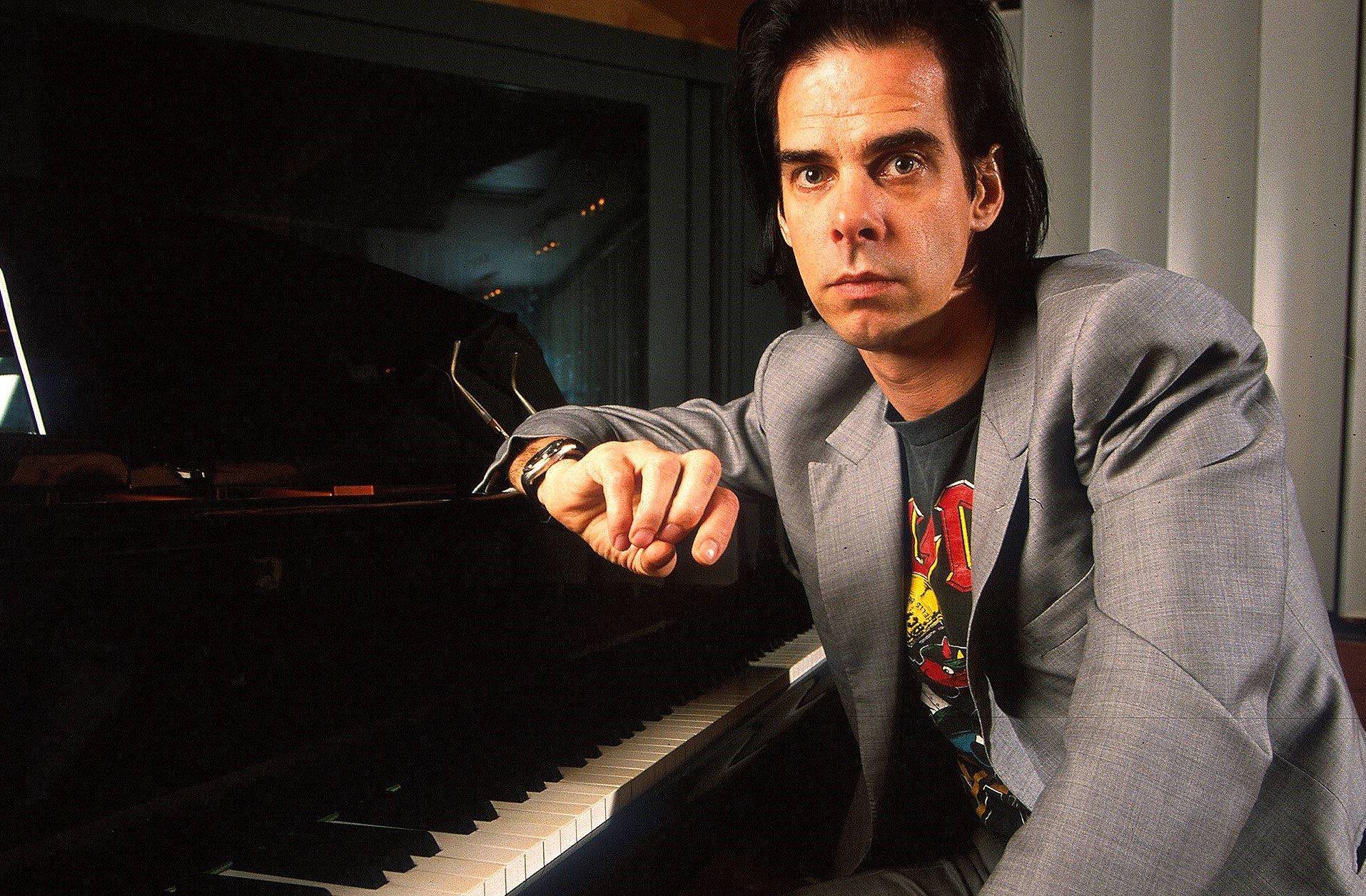
Photo: Martin Philbey
list
The Essential Nick Cave: 10 Songs Highlighting His Dark Brilliance
Ahead of ' Wild God,' Nick Cave's first studio effort since 2021, revisit 10 of of the singer's most essential tracks from his prolific 45-year career.
"There is never a master plan when we make a record," Nick Cave recently said about creating Wild God, his upcoming 18th studio effort with longtime backing band the Bad Seeds. "The records rather reflect back the emotional state of the writers and musicians who played them. Listening to this, I don’t know, it seems we're happy."
Happiness is not an emotional state you'd typically associate with an artist renowned for his ghostly demeanor, baritone vocal delivery which sits somewhere between unholy preacher and gothic overlord, and slightly unnatural obsession with the inherently morbid side of life. He was once characterized as the leader of "the most violent live band in the world."
But Cave's macabre disposition has served him well. Since arriving on the scene with post-punk cult heroes the Birthday Party in the early 1980s, the Australian has gradually developed a cult following willing to hang on his every darkly poetic word. Alongside his day job, he's enjoyed huge critical acclaim as part of side-project Grinderman, as a novelist, and as a Hollywood composer and screenwriter (most notably pulling double duty on 2006 western The Proposition).
His work has been covered by artists as eclectic as Snoop Dogg, Arctic Monkeys and Johnny Cash. In fact, Cave is now so ingrained in the establishment that he was on the guest list for King Charles III's coronation.
With Cave's first studio effort since 2021's Warren Ellis collaboration, Carnage, about to hit the shelves, here's a look back at 10 of the most important songs from his prolific — and GRAMMY-nominated —45-year career.
"Tupelo" ('The Firstborn Is Dead,' 1985)
Although recorded in Berlin by an Australian who'd lived in London for three years, Cave's sophomore The Firstborn Is Dead continued to showcase his fascination with the American South. None more so than on its opening number, a typically morbid, tornado-stricken reimagining of the night Elvis Presley was brought into the world.
Co-written by Barry Adamson of post-punk outfit Magazine, "Tupelo" correlates the apocalyptic weather conditions with the birth of a demonic presence, reimagining the King of Rock and Roll as the King of Darkness. "Well Saturday gives what Sunday steals /And a child is born on his brothers heels/Come Sunday morn the first-born dead," Cave croons, inferring that Elvis' still-born twin Jesse was his first sacrificial lamb. You can't imagine it blaring over the speakers at Graceland, but this is the murder balladeer at his fire and brimstone best.
"The Mercy Seat" ('Tender Pray,' 1988)
Cave has often been dismissive of his band's fifth LP Tender Prey ("I hear bad production and I hear bad performances as well"). And yet it birthed what many consider to be his macabre masterpiece: A seven-minute soliloquy delivered by a death row prisoner who becomes more unhinged the closer he gets to the electric chair. In fact, he repeats its biblical chorus ("And in a way I'm yearning/To be done with all this measuring of proof/Of an eye for an eye/And a tooth for a tooth") a remarkable 14 times before being put out of his delusional, deranged misery.
As always, Cave inhabits his deplorable creation with an emotional intensity that's both compelling and deeply unsettling, while Mick Harvey's slithering, unnerving bass — apparently recorded by hitting the strings with a drumstick — only adds to the sense of malevolence. Little wonder, then, that despite Cave's misgivings about its parent album, "The Mercy Seat" has remained a setlist ever-present.
"The Ship Song" ('Good Son,' 1990)
Cave risked alienating his cult fan base in 1990 when he showed a much softer side on Good Son, a record inspired by both his post-rehab clarity and relationship with Brazilian reporter Viviane Carneiro. But "The Ship Song" proved that the gothic crooner could tackle the universal theme of undying devotion without descending into schmaltz.
The tender piano ballad doesn't exactly provide a happy ending, with a deeply smitten Cave essentially acknowledging the old adage, "if you love someone, set them free." ("Your face has fallen sad now/For you know the time is nigh/When I must remove your wings/And you, you must try to fly"). Cave laterexpressed doubts about whether his concerted attempt to write a classic love song truly connected. The plethora of cover versions, including anall-star rendition promoting the Sydney Opera House, shows his concerns are unfounded.
"Red Right Hand" ('Let Love In,' 1994)
The Cave song that's arguably penetrated the mainstream more than any other, "Red Right Hand" has been a regular fixture of the Scream franchise, been covered by not just one but two former girlfriends (Anita Lane, PJ Harvey), and, most notably, served as the theme to everyone's favorite flat-capped period drama "Peaky Blinders."
Inspired by a line from John Milton's Paradise Lost, the centerpiece of eighth LP Let Love In focuses on a cash-grabbing, chameleonic figure ("He's a ghost, he's a god/He's a man, he's a guru") who causes all kinds of bloody havoc in a "reconstructed" version of Cave's Wangaratta hometown. Haunted house organs, brooding basslines, and a doom-laden tolling bell heighten the sense of menace on a track which once again proves few other artists are as effective at chilling to the bone.
"Where The Wild Roses Grow" ('Murder Ballads,' 1995)
The man dubbed the Gothic Lord of Darkness sings a deeply sinister duet inspired by an Appalachian murder ballad with the pop princess who'd shot to fame with a cover of "The Loco-Motion?" On paper, UK Top 20 hit "Where The Wild Roses Grow" sounds like the stuff of fever dreams. Yet somehow, Cave and fellow Antipodean Kylie Minogue (then very much in her transitional pop to indie phase) made for an unlikely dream team.
Cave wrote the tune especially for Minogue, whom he freely admitted to quietly obsessing over, and was always going to convince on such a grotesque fairytale. Minogue more than holds her own as the tragic heroine whose inherent beauty compels her psychotic date to end their third date in bloodshed ("And the last thing I heard was a muttered word/As he knelt above me with a rock in his fist").
"Into My Arms" ('The Boatman's Call,' 1997)
"Into My Arms" was written while Cave was undergoing rehab, and specifically during one of the church trips patients were allowed each Sunday. Could divine intervention have played a part? After all, the highlight from tenth album The Boatman's Call finds the one-time cathedral choirboy desperately trying to find solace in a God that he doesn't quite believe in.
No matter how the alternative hymn was derived, though, it remains one of Cave's most affecting spirituals, a brutally honest meditation on the relationship between love and faith reportedly inspired by two former girlfriends, Carneiro and Harvey. "Into My Arms" has been cited by Cave as the song he's proudest of, with his performance at the funeral of close friend Michael Hutchence (he's godfather to the late singer's daughter) later that same year lending it an extra poignancy.
"Get Ready For Love" ('Abbatoir Blues/The Lyre of Orpheus,' 2004)
Taken from the double album which cleverly separated Cave's split personalities — the abrasive post-punk provocateur and darkly melancholic troubadour — "Get Ready For Love" kicks things off with one almighty bang. Hinting at the ferociousness that would define side project Grinderman's debut three years later, the punkish gospel practically bursts out of the speakers, with Cave audibly relishing another opportunity to play the evangelical feverishly spreading the word.
"Praise Him till you've forgotten what you're praising Him for/Then praise Him a little more," he barks in a manner which sits somewhere between The Henry Rollins Band and "The Righteous Gemstones." It's his most acerbic take on organized religion in a discography dominated by the subject, and following the disappointingly muted Nocturama, a clear sign that he was still able to thrill and disturb in equal measure.
"Dig, Lazarus, Dig!!!" ('Dig, Lazarus, Dig!!!' 2008)
The title track from Cave's return-to-form LP premiered on Christmas Day, but its 21st century take on Lazarus's resurrection wasn't interested in spreading any festive cheer. In fact, by reimagining the biblical figure as a bumbling idiot named Larry who immerses himself in a life of sex, drugs, and criminality ("He feasted on their lovely bodies like a lunatic/And wrapped himself up in their soft yellow hair"), "Dig, Lazarus, Dig!!!" was more likely to leave conservatives choking on their turkey dinner.
Combining the rock and roll swagger of Link Wray with the stream-of-consciousness melodies ofTalking Heads, the track which originated from a Grinderman demo could never be accused of taking itself too seriously, though. Indeed, when he utters the final line, "Oh, poor Larry," with a camp shriek, Cave sounds more like a Carry On cast member than a harbinger of doom.
"Jubilee Street" ('Push the Sky Away,' 2016)
Following the departure of founding Bad Seed Mick Harvey, Cave and company appeared to hit the reset button for 2013's Push The Sky Away, a sobering, stripped-back affair inspired by the “significant events, momentary fads, and mystically-tinged absurdities” derived from the world wide web. Its second single "Jubilee Street" certainly leans into the latter.
Told from the perspective of a man who may well have murdered the prostitute blackmailing him, the song has something of a literary true crime quality. Meanwhile, the shimmering violins which sound like they're being beamed in from another planet, and the transcendent coda in which the protagonist claims he's both beyond recriminations and now moving to a higher plane ("Curtains are shut, the furniture is gone/I'm transforming, I'm vibrating, I'm glowing") heighten the otherworldly feel. Cave was so entranced by its enigma that he felt compelled to pen a meta song, "Finishing Jubilee Street," about its inception.
"Ghosteen" ('Ghosteen,' 2019)
Following the tragic accidental death of his teenage twin son Arthur three years earlier, Cave's 17th studio effort was understandably consumed by themes of loss, grief, and, as on this beautifully haunting 12-minute meditation, human existence.
One of several tracks based on metaphysical conversations he shared with his joint-youngest, "Ghosteen" is unlikely to leave a dry eye in the house, with "There is nothing wrong with loving something/You can't hold in your hand" proving that Cave could speak from the heart with a masterful simplicity. There's also a heavenly, dreamlike quality to its production, which drifts from Leonard Cohen-esque chanson to ambient prog in a comforting slow-motion pace befitting of its subject matter. An emotionally devastating but truly spellbinding display of catharsis, the title track adds to the argument that Ghosteen is Cave's latter day opus.
More Alternative Music News
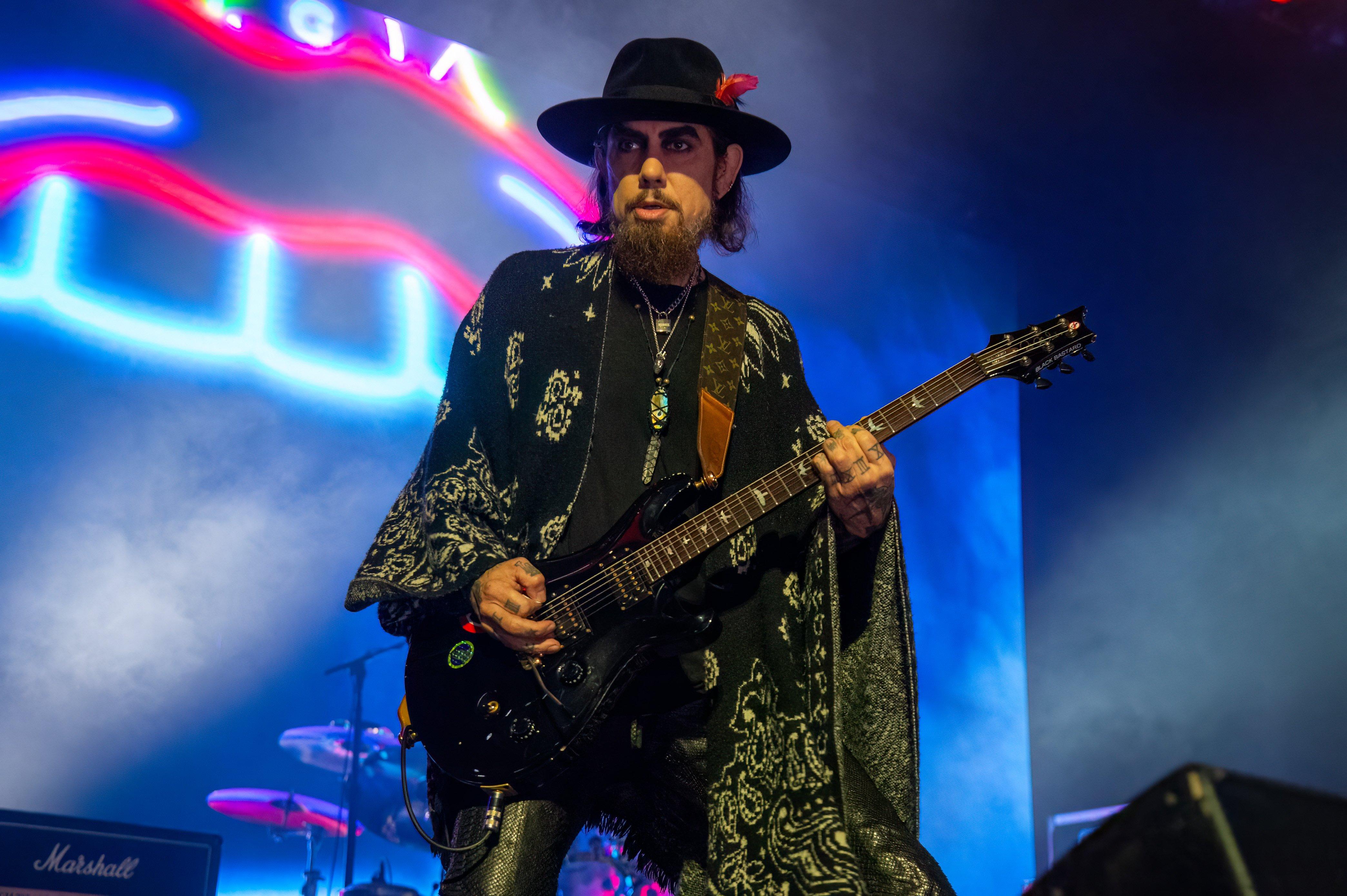
Photo: Joseph Okpako/WireImage
interview
Dave Navarro Talks Jane's Addiction's "Imminent Redemption" & The Foursome’s "Secret Sauce"
“The four of us have no business being together in a band given our backgrounds," Navarro says of his bandmate's musical origins. Despite that, Jane's Addiction is back with a new song and their first U.S. tour in over a decade.
The original members of Jane’s Addiction are a diverse bunch. There’s trippy visionary singer/stylist and Lollapalooza co-founder Perry Farrell; Stephen Perkins, the monster drummer with a goofy-meets-spiritual vibe; and bassist Eric Avery, who opted not to be part of the 1997 and 2001 Jane’s reunions and played with Garbage from 2005 to 2022.
Then there’s multi-faceted musician Dave Navarro, who in addition to his work with Jane's, spent five years with the Red Hot Chili Peppers, and brough his guitar stylings to songs by Janet Jackson, Nine Inch Nails, Alanis Morissette and Guns N’ Roses. The Los Angeles native has made headlines with high-profile romances, TV reality appearances, television hosting duties, and in numerous all-star collaborations and benefit performances.
But Jane’s Addiction, which formed Los Angeles in 1985, has his heart. The group’s groundbreaking 1988 major label debut Nothing Shocking and follow-up Ritual De Lo Habitual marked the band as progenitors of the alternative scene. Their DIY aesthetic in videos, art and music resulted in subversively joyful creations, including the chart-topping "Been Caught Stealing."
However, egos, creative differences and substances interferred in the band’s trajectory, and a 1991 farewell tour also marked the inception of the first Lollapalooza and of Farrell as business mogul.
Jane’s Addiction may have helped make alternative rock mainstream, but never lost their sense of edgy creativity. They performed and recorded on and off in the ‘90 and early 2000s, in various incarnations with and without Navarro. The original lineup reunited in May 2024 at Bush Hall in London; that victorious, energized live return led to songwriting, with new single “Imminent Redemption” offering up lyrics that seem to be a rallying cry for Jane’s circa 2024 and onward: “Let's make some good trouble / Let's stir up that karma / Let's launch us a comeback.”
The track dropped ahead of a 23-city tour that kicked off on Aug. 9 at Fontainebleau Las Vegas. GRAMMY.com caught up with an energized, loquacious Navarro ahead of that jaunt, Jane’s first with the OG 1985 lineup in 14 years.
This interview has been edited for clarity and length.
Listening to "Imminent Redemption" conjured a mental image of shaking up a two-liter bottle of Coca-Cola; You want to rock out, explosively, and you finally get to do it.
To me, it feels like a follow-up to Ritual. The band right now is in such a great place. We have the original lineup. God bless Chris Chaney, who's one of the best bass players in the world, one of my best friends. He stood in and he did two records with us,15, 20 years.
A lot of the Jane's Addiction material is primarily written from basslines Eric Avery comes up with, and those are usually the memorable singable parts of the song. You might sing the vocal, but you're not singing the guitar part. Sometimes you're not singing the vocal part, but you're singing the intro to "Mountain [Song]" in your head, or the intro to "Three Days." His input is really the musical backbone of the band. When we got together to do these [new] songs, that was immediately there.
We also wanted to keep the music under-produced. We didn't want to go crazy with modern-day technology and all kinds of crazy instrumentation, overdubs and tracks; we wanted to keep it pretty raw. In fact, I think there's parts of "Imminent Redemption" that are reminiscent of Ritual and Nothing Shocking, but I also think it's reminiscent of the Triple X record [1987’s Jane’s Addiction] because there aren't 15 guitar tracks. There aren't synths, there aren't all kinds of things that we ended up doing as we went on and probably will do on other songs.
Lyrically, Perry's coming from such a... I don't want to speak for him, but my interpretation is that it's an aggressive cry for unity and peace. There's a little bit of anger there, but anger in the name of let's not have any anger anymore, if that makes any sense.
It does.
Another weird thing about Jane's Addiction is a lot of our most well-known songs — "Mountain Song," "Stop," "Ocean Size," "Jane Says" — they really don't have choruses. They just, say, have two parts to go back and forth.
So the fact that we got away with "Imminent" and we're able to put a chorus in there is kind of unusual. But I think it works, and it still kind of keeps it like the two-part formula of Jane's Addiction. But then the outro goes into another musical direction, which is also very us, because we get bored within songs.
Do you think "Imminent Redemption" will grow into a record?
There might be stuff I can't talk about, but no one's told me not to talk about it, so that's their problem, I guess!
The idea is to release a full-length album; I would consider it the fourth Jane's Addiction record. The two records we did with Chris Chaney I love, but it's a different band. With this lineup, I really feel like this next record's going to be the follow-up to Ritual. It's really special to be back with Eric and writing with Eric; Eric and I have always worked really well off each other in terms of finding parts that work together and complement one another but are not really the same.It's like we picked up just where we left off.
I don't know if we're going to put out a record or if we're going to put out a song every once in a while. Whatever that master plan is, that I can't speak to. It's either a song comes out every month until there's 12 songs, or we put out a couple songs and then we put out the record. I don't know. We have plenty of completed material already, so it's one way or another it'll all be out there.
A "follow-up record" more than 30 years later…
In some ways, it was such a shame for the band to part at such a musical peak, because I think that record [Ritual] is really, really special. But it also saved us from following it up with something subpar. So it is just part of the legacy. It's part of the story. And so far I've been really happy with everything we've been making.
How has it felt being back on the road?
We just finished a two-month tour of Europe, and I was so grateful to be back out, and doing it with the band, and being able to do it. But man, it was challenging.
It still has that [feel of] the early days, where we were on this edge of this cliff where nobody really knew what was going to happen from time to time, from song to song, in between songs, what Perry was going to say or do. Or if he was going to all of a sudden just go into some stream-of-consciousness banter in the middle of a breakdown of a song. And you just kind of have to pay attention and just feel where it's going to change.
We kind of lost that for a long time. And now that element of surprise has come back to the shows. Also, I think the fact that this last tour was just the four of us on stage with minimal to no production, a couple of lights and four guys playing weird music, that's all we needed. It left room for there to be magical moments that gave you goosebumps because you weren't distracted by a bunch of stuff.
In the broadest sense, what is at the core of what makes this lineup special?
Stephen Perkins and I were in high school together, and we had a heavy metal band. We played heavy metal covers, we wrote heavy metal songs, and we were into technical wizardry. We were into fast guitar playing. He was into Neil Peart.
Perry, at the same time, was doing a goth band called Psi Com. Eric was more in the new wave punk rock world. He was doing different experimental stuff. And we ended up getting together as a result of Stephen dating Eric's sister. Perry and Eric met, and started playing together, and they needed a drummer and a guitar player. And they called us and we got in there.
The formula is that the four of us have no business being together in a band given our backgrounds. Now, since then, they've grown to love some of the music Stephen and I came up with. We've grown to love the music that they came up with. And then it kind of just blossomed.
We decided we weren't any particular kind of band. We were just musicians, and we would just pull from anything. If we wanted to go in a Pink Floyd direction, we'll do that. If we want to go in a Black Sabbath direction, we'll do that. If we want to go in an Iggy direction, we'll do that. But without consciously choosing to, just being open to all genres.
Fans would agree.
That’s kind of like the secret sauce: Combining elements that wouldn't normally go together and putting them together and seeing what happens. It's been a long road. Although in our older years, we do get along very well and have a lot of respect for each other. But coming up and through the early years, it was difficult. There were resentments, there were stylistic differences of opinions. There were multiple breakups, multiple problems that just came from adolescent ego.
Now that we're all at the ages we're at, and just about everybody has a family, we kind of just let go of that. We’re just, "You know what? We had something really special back then, and I don't know what we were complaining about." So we're doing it again.
Morgan Enos and Katherine Turman contributed to this story.
Explore The World Of Rock
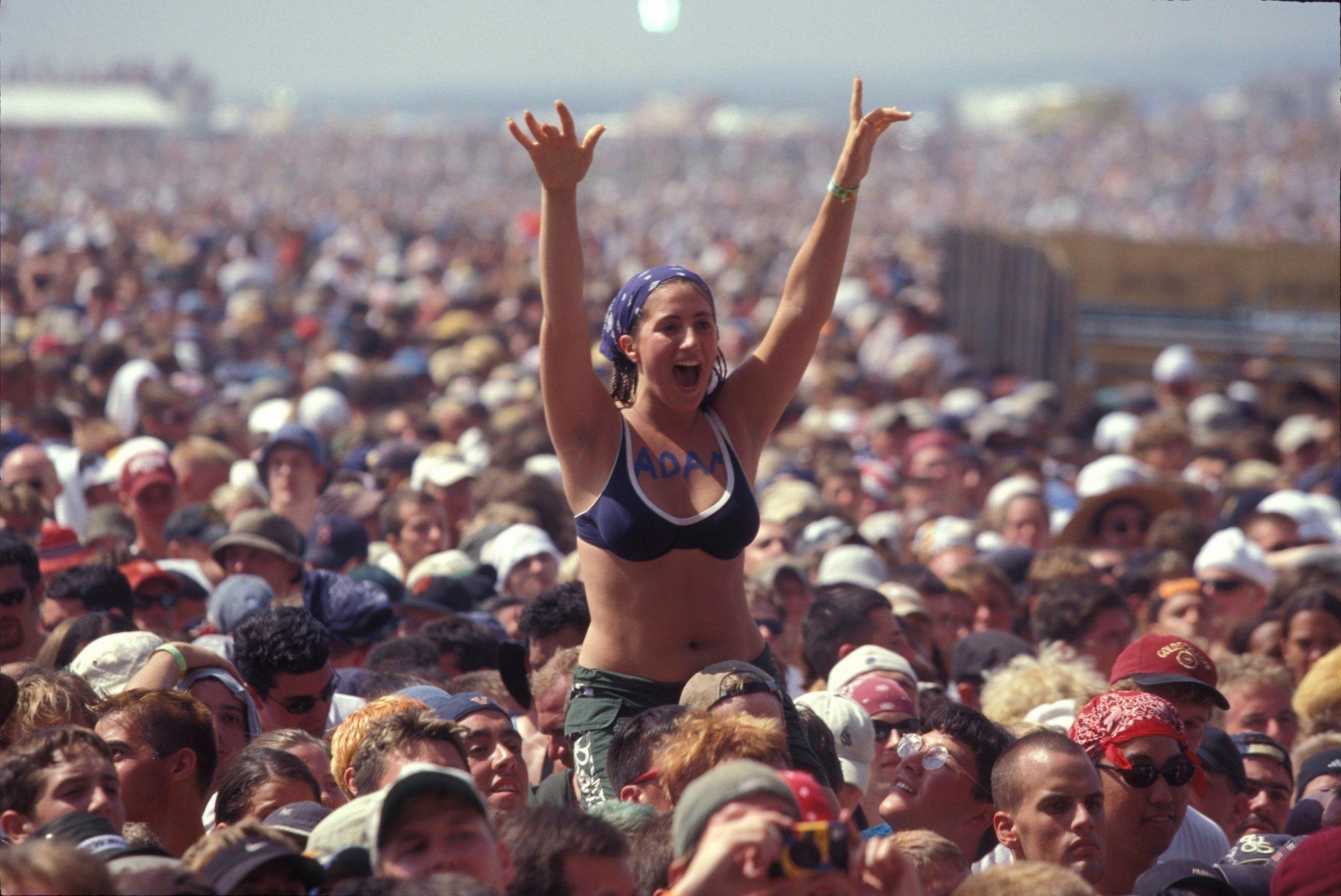
Photo: Getty Images/John Atashian
feature
On This Day In Music: Woodstock '94 Begins In Upstate New York
Held 30 years ago Aug. 12-14, Woodstock '94 featured an eclectic (and muddy) lineup that launched Nine Inch Nails, Green Day and others into the limelight.
Woodstock '94 is no middle child music festival. While not as groundbreaking as Woodstock '69 or as infamous as Woodstock '99, Woodstock '94 boasts a unique legacy that deserves recognition.
Held Aug. 12-14 in the Hudson Valley town of Saugerties, New York, Woodstock '94 was set to commemorate the silver anniversary of the original Woodstock festival in 1969. Nodding to its origins in '69, Woodstock '94 was billed as "2 More Days of Peace and Music" (a third day of the festival was eventually added).
Woodstock '94 featured a wide range of acts that both reflected the nostalgia of Woodstock '69 and highlighted a myriad of new groups. Original Woodstock performers such as Crosby, Stills & Nash (minus Neil Young) and Santana topped the bill, and now-household names including Green Day and Red Hot Chili Peppers performed some of their earliest festival sets.
Even Bob Dylan, who initially declined an appearance at Woodstock '69 despite living near the festival at the time, had a change of heart and agreed to play at Woodstock '94.
It seemed that everyone wanted to capture a sliver of the magic from the original Woodstock. Although roughly 164,000 tickets were sold, the actual number of attendees exceeded 350,000 (surpassing even Coachella 2024's attendance rates).
Spirits were high as the festival opened on Friday with dry, sunny skies highlighting performances from Sheryl Crow, Collective Soul, and others. By the weekend, the weather took a turn and transformed the festival grounds at Winston Farm in Saugerties into a giant muddy puddle. Although Woodstock '69 was also rainy and mud-filled, the madness that ensued at Woodstock '94 led it to be dubbed "Mudstock."
As Primus performed "My Name Is Mud" on Saturday, festival-goers seized the opportunity to fling the wet dirt at the band on stage.
"Once I started singing the words to "My Name Is Mud," all of a sudden huge chunks of sod started flying my way and it was pretty frightening," Primus' lead singer told Billboard 20 years later. "I still have those [speaker] cabinets to this day, and those cabinets still have mud in them."
With high energy from Friday's acts and some mud-induced chaos, attendees were buzzing with anticipation and excitement for the rest of the weekend. The party atmosphere continued throughout day two — and not solely because Blind Melon lead vocalist Shannon Hoon strolled on stage tripping on acid, wearing his girlfriend's dress.
Aerosmith may have been day two headliners, but Nine Inch Nails' 15-song set remains a highlight of Woodstock '94. The band drew the biggest crowd of the festival, and were catapulted into wider mainstream visibility. Taking advantage of the unpredictable weather, then-bassist Danny Lohner pushed lead vocalist Trent Reznor into the mud, prompting Reznor to retaliate. The other members of the band soon joined in on the fun, strutting onto the stage covered in mud.
Opening with Pretty Hate Machine's "Terrible Lie," NIN turned the massive audience into a giant mosh pit and maintained that high energy until the end of the set. While the band faced technological difficulties onstage, it only seemed to enhance their raw, gritty image.
The set was so celebrated that it is forever memorialized in the Rock & Roll Hall of Fame, with art installations featuring a life-sized mannequin replica of Reznor singing into the microphone and his keyboard, both covered in mud.
By day three, Woodstock '94 was clearly becoming an iconic music festival that would be discussed for years to come. If Saturday's mud-slinging electric performances weren't enough, the final day of the festival featured performances from Green Day, Red Hot Chili Peppers, Bob Dylan, Santana, and others.
When Green Day — fresh off the success of their third studio album Dookie — took the stage, all hell broke loose. While the band was and continues to be known for their rowdy live sets, their performance at Woodstock '94 remains unmatched.
By the time Green Day started performing, the fairgrounds had turned into a full-blown mud fight. The band tried to push through the performance and embrace the chaos, but the set came to an abrupt stop when lead singer Billie Joe Armstrong told the crowd, "Everybody say shut the f— up and we’ll stop playing." When the crowd shouted the phrase back, Armstrong said goodbye on behalf of the band, and the rest of the group fled the stage.
By the end of the performance, lead singer Billie Joe Armstrong had lost his pants and the band had to be escorted out of the festival grounds by a helicopter. On their way off the stage, security confused mud-covered bassist Mike Dirnt for a crazed fan and tackled him, leaving him with five fewer teeth than he started the set with.
"He actually sheared my teeth, and I blew like five teeth. Only one of them died. I fixed the rest of them, but he all sheared up the back of my teeth," Dirnt confessed to The Aquarian in 2013. "It was horrible. But the great thing about it is that I was able to get out of there, and I'd do it again tomorrow if I had to."
Peter Gabriel closed out the weekend by remaining true to the original mission of the festival, offering fans peace filled with good vibes. Gabriel's music, though deeply contrasting with the hard rock and punk acts that dominated the festival, provided a flawless end to the chaos that had unfolded over the past three days.
While the 1994 installment of Woodstock hasn't basked in the same spotlight as its 1969 and 1999 siblings — the latter of which has been the subject of two documentaries in as many years — it remains far from forgotten.
Woodstock '94 stands as one of the legendary music festivals of all time. Although the rain may have soaked the grounds, turning it into a muddy catastrophe, it also nourished the roots of some of the most iconic musical acts and sent them into the mainstream media. The festival was more than just a series of performances, but rather a unique cultural event.
Latest Music Festival News
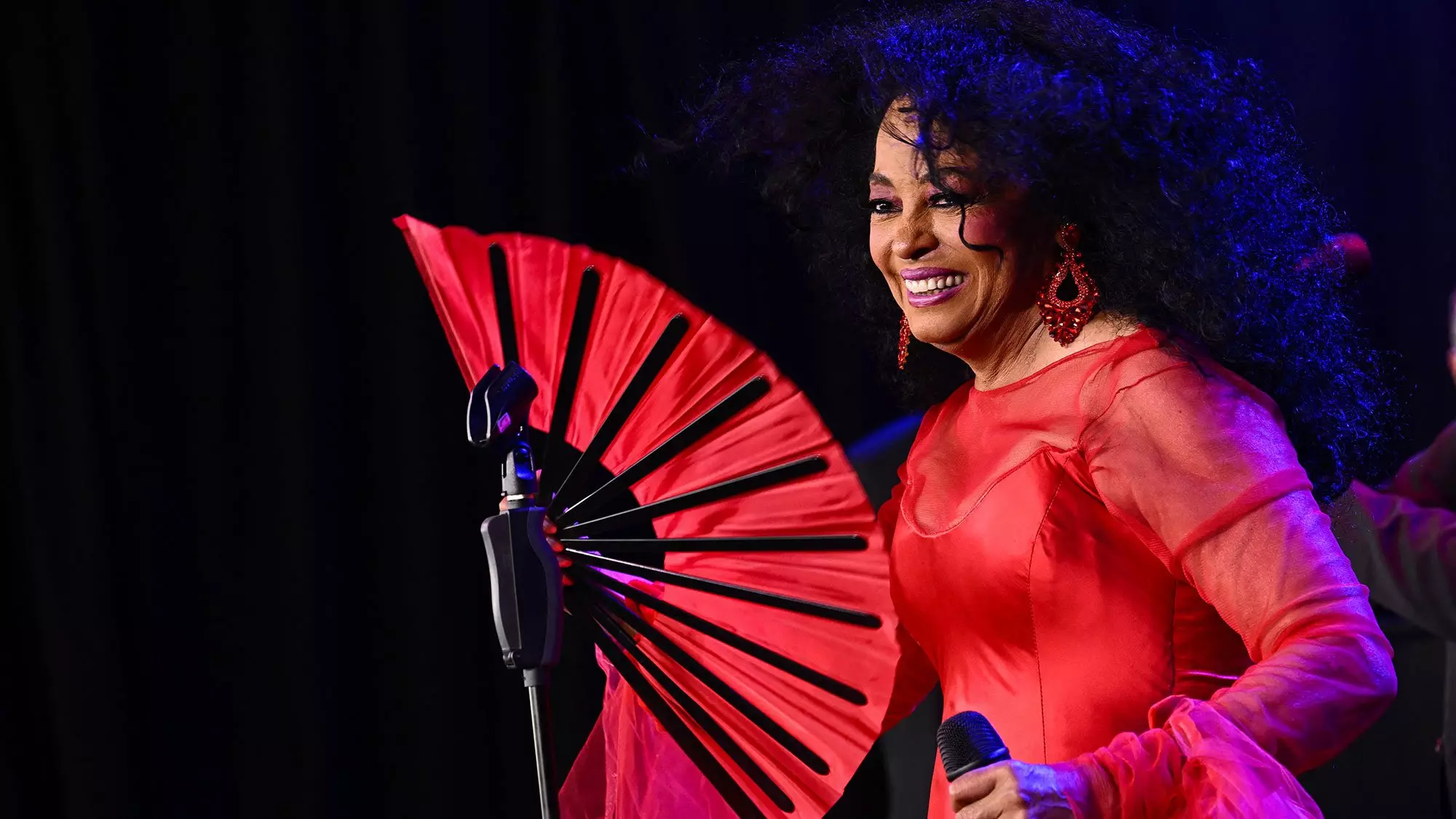
Get Ready For Fool In Love Fest With This Soulful Playlist: Hits & B-Sides From Chaka Khan, Thee Sacred Souls, Smokey Robinson & More

8 Can't-Miss Acts At Afro Nation Detroit 2024: Shenseea, Ayra Starr, Kizz Daniel & More
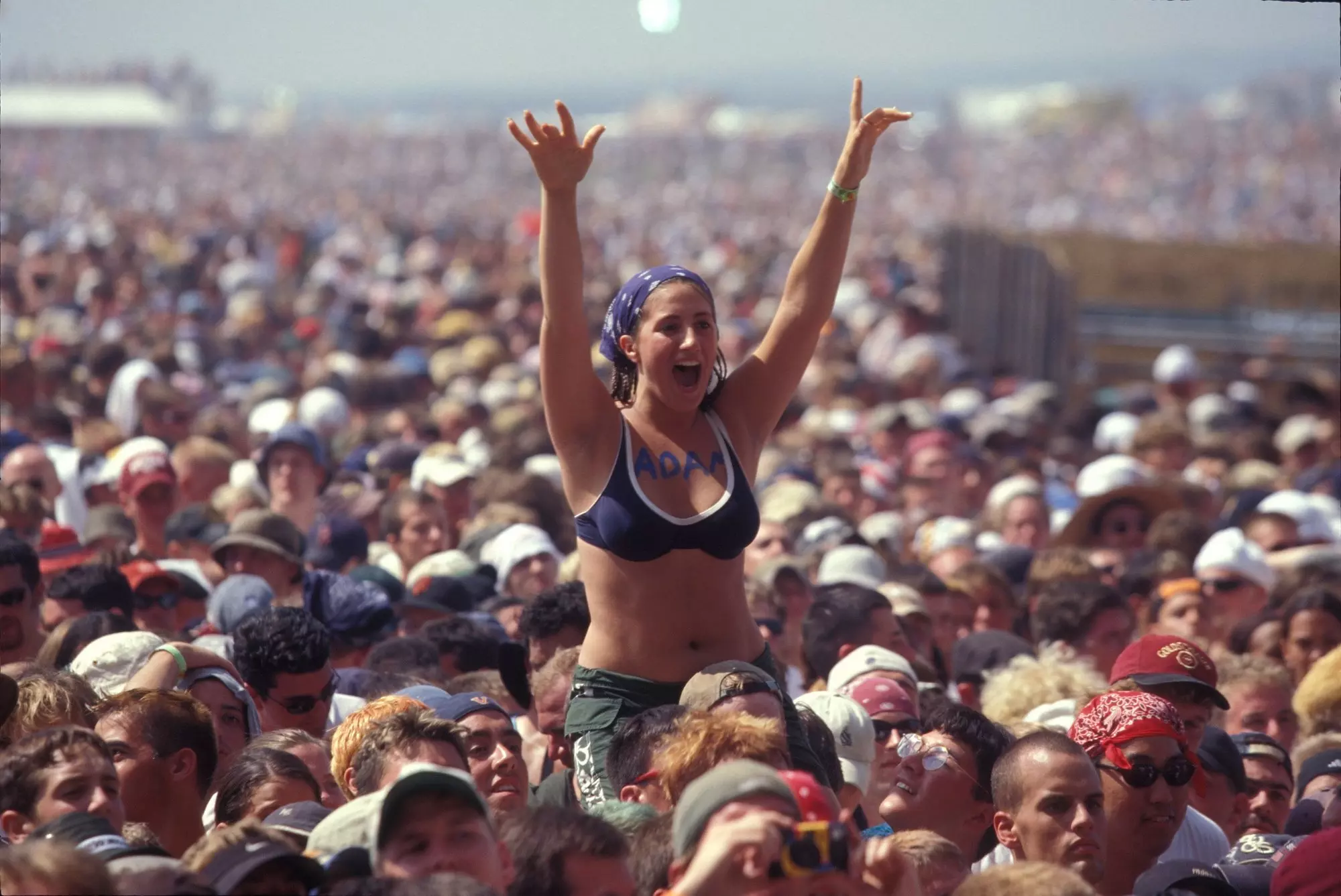
On This Day In Music: Woodstock '94 Begins In Upstate New York
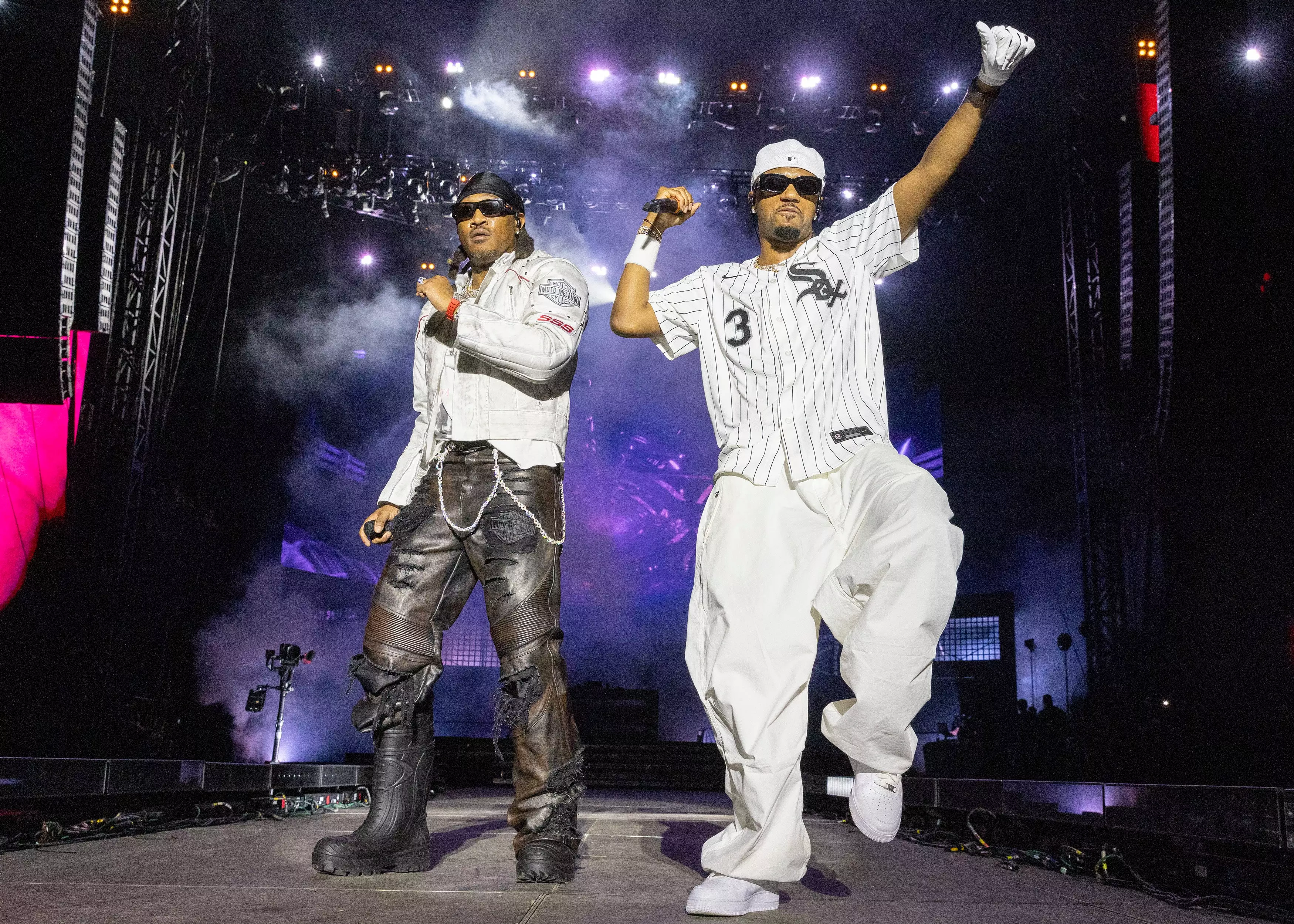
7 Stellar Sets From Lollapalooza 2024: Megan Thee Stallion, Future x Metro Boomin & More
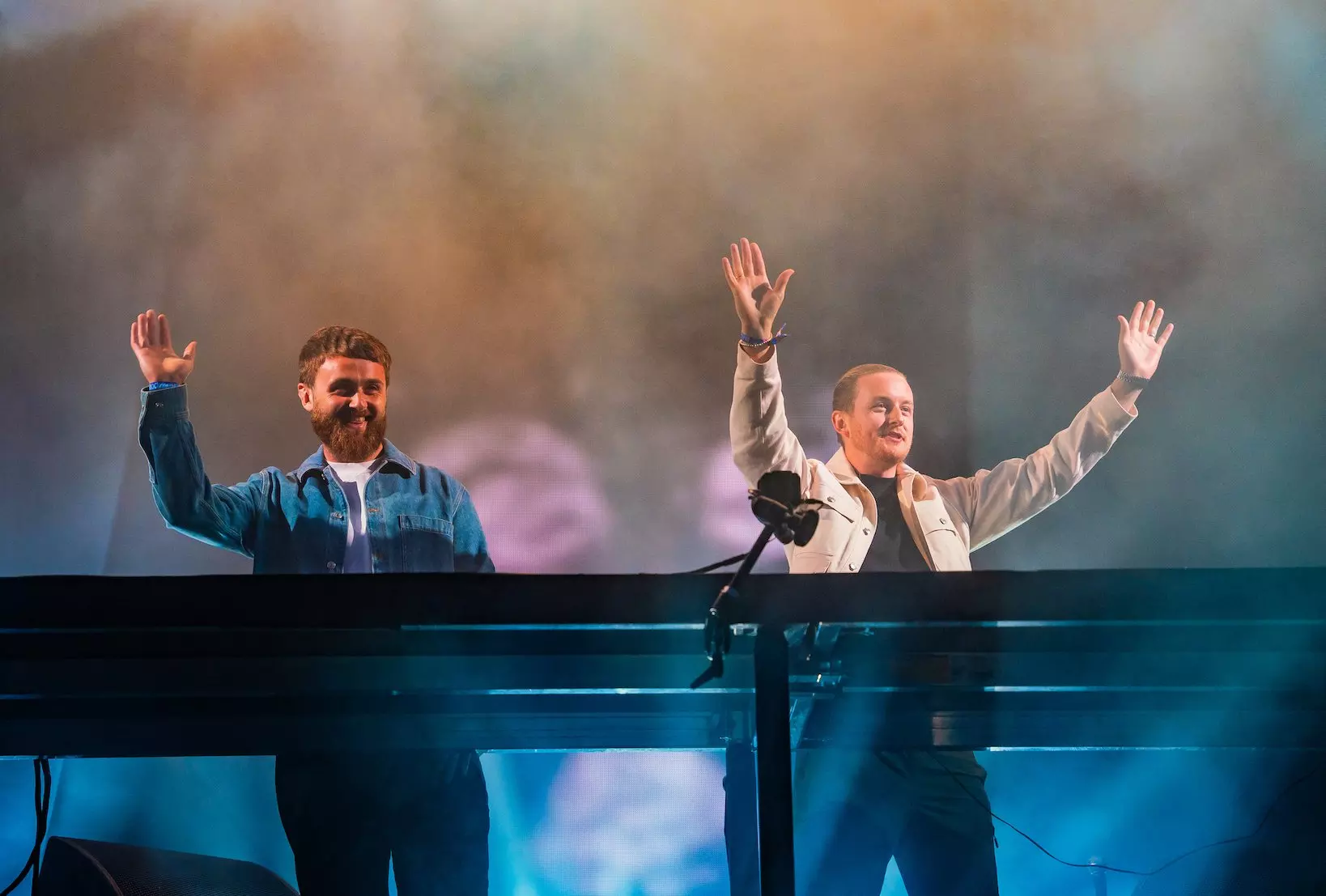
10 Cant-Miss Sets At HARD Summer 2024: Disclosure, Boys Noize, INVT & More









